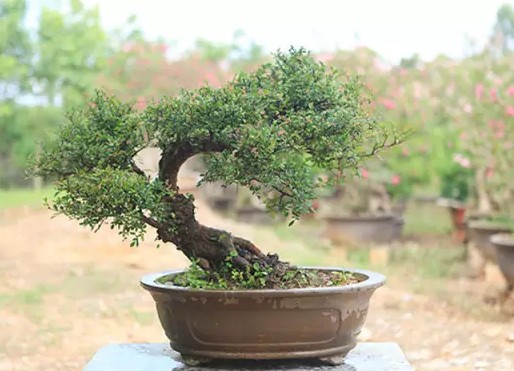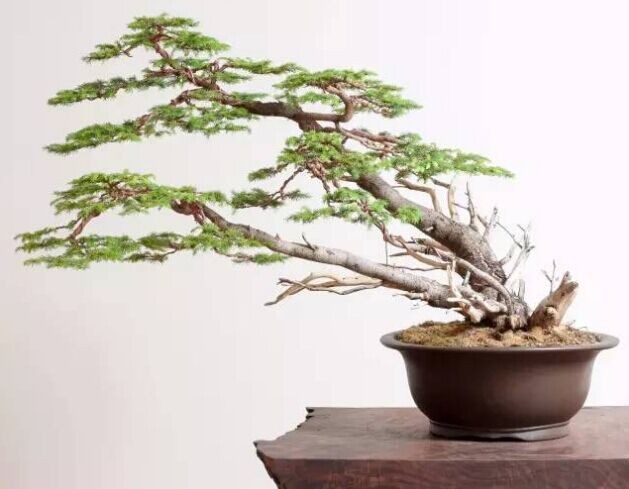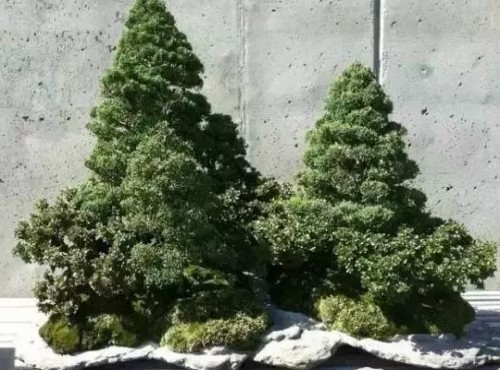The method of making bonsai of hammer elm
The original tall and big tree species into bonsai display at home, can add a stable and generous living, but also can increase a lot of family style, nut elm bonsai of course also has this effect, let's take a look at how to make a pot of nut elm pile bonsai.

Selection of basin: hammer elm pile scene is generally suitable to use glazed pottery basin, but also can use purple sand pottery basin. The shape of the basin is various, depending on the shape of the tree, and the rectangular basin is the most common. Simple and elegant is the best color.
Use soil: the requirement to the soil is not strict, the adaptability is strong. Pot culture with loose and fertile pastoral soil or rotten leaf soil is suitable, good air permeability and water permeability, is conducive to the development and growth of roots and maintain the luxuriant branches of old piles.
Planting: usually planted before sprouting in February-March in spring, or in autumn. When planting, trim the root properly, cut off the overlong root, and lift it properly. The root system of Ulmus pumila is well developed, which is suitable for bonsai with stone. The planting of attached stone is more difficult, generally, it is necessary to choose the stone with deeper cracks (the cancellous stone can be artificially carved into a stone gap), trim the roots, embed them into the cracks, and tie the main coarse roots with brown silk to make them fixed.
When taking root, pay attention not to damage the root system as far as possible, can be covered with moss. After taking root, smear the wet river soil on the outside of the stone, then wrap it with moss, and then plant the root together with the attached stone in the basin soil and carefully maintain it for 3-4 years. When the root system embedded in the stone gap grows fully and fills the stone gap, it can be unbound. At this time, the root system is integrated with the stone, and the stone-attached bonsai of a pot of elm is basically completed.
Time: 2019-05-26 Click:
- Prev

The method of making bonsai of Sabina vulgaris
Pine and cypress bonsai, rugged old, cold and heat-resistant, cultivation does not choose soil, is a longevity tree species, much loved by people. However, it is difficult to dig and plant the old pine and cypress stakes, because the sap is in the state of wax, the bark is fragile and fragile, once damaged, the grease seal is rigid, and the sap circulation is delayed. It's hard to sprout new buds.
- Next

The method of making jungle bonsai
Jungle bonsai mainly reflects the comprehensive image of the beauty of trees. Although the choice of plant form is not as strict as other bonsai. However, the image of group beauty is reflected through the combination of individuals. Therefore, as a jungle bonsai, every tree should be able to show its individual beauty in a unified composition.
Related
- Fuxing push coffee new agricultural production and marketing class: lack of small-scale processing plants
- Jujube rice field leisure farm deep ploughing Yilan for five years to create a space for organic food and play
- Nongyu Farm-A trial of organic papaya for brave women with advanced technology
- Four points for attention in the prevention and control of diseases and insect pests of edible fungi
- How to add nutrient solution to Edible Fungi
- Is there any good way to control edible fungus mites?
- Open Inoculation Technology of Edible Fungi
- Is there any clever way to use fertilizer for edible fungus in winter?
- What agents are used to kill the pathogens of edible fungi in the mushroom shed?
- Rapid drying of Edible Fungi

